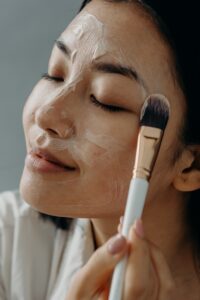Navigating the Complexities of Combination Skin Care

Combination skin is one of the most common skin types, affecting many individuals around the world. This skin type is characterized by having both oily and dry areas on the face, which can make it challenging to find the right skincare routine. However, with the right approach and understanding, it is possible to create a skincare routine that works well for combination skin.
Understanding Combination Skin
Before discussing the right skincare routine for combination skin, it is essential to understand what this skin type is all about. Combination skin means that some areas of the face, such as the forehead, nose, and chin, are oily, while other parts, like the cheeks and around the eyes, are dry. This is because the T-zone, which consists of the forehead, nose, and chin, has more oil glands than other parts of the face.
People with combination skin may also experience other skin issues, such as acne, blackheads, and enlarged pores. It is important to note that combination skin is not necessarily a bad thing, as it can be a sign of healthy skin.
Finding the Right Skincare Routine for Combination Skin
The key to finding the right skincare routine for combination skin is to balance the needs of both oily and dry areas of the face. This means using products that are neither too harsh nor too moisturizing, as both extremes can exacerbate the problem. Here are some steps to follow when creating a skincare routine for combination skin:
Step 1: Cleanse Your Skin
Cleansing your skin is an essential part of any skincare routine, regardless of your skin type. For combination skin, it is best to use a gentle cleanser that will remove dirt, oil, and makeup without stripping the skin of its natural oils. Look for a cleanser that contains ingredients like salicylic acid, glycolic acid, or benzoyl peroxide, which can help control excess oil and acne.
Step 2: Exfoliate Regularly
Exfoliation is another crucial step in any skincare routine, as it helps remove dead skin cells and unclog pores. However, for combination skin, it is important to choose an exfoliant that is gentle enough not to irritate the dry areas of the face. Look for a chemical exfoliant that contains alpha-hydroxy acids (AHAs) or beta-hydroxy acids (BHAs), which can help control oil production and reduce the appearance of pores.

Step 3: Use a Toner
Using a toner can help balance the pH level of your skin and remove any remaining dirt and oil after cleansing. For combination skin, it is best to use a toner that is alcohol-free and contains hydrating ingredients like hyaluronic acid, which can help soothe dry areas of the face.
Step 4: Moisturize Your Skin
Moisturizing your skin is essential, even if you have oily skin. However, for combination skin, it is best to use a moisturizer that is lightweight and oil-free, as heavy creams can clog pores and cause breakouts. Look for a moisturizer that contains ingredients like niacinamide, which can help control oil production and soothe dry areas of the face.
Step 5: Protect Your Skin
Protecting your skin from the sun is crucial, as exposure to UV rays can cause damage and accelerate the aging process. For combination skin, it is best to use a sunscreen that is lightweight and non-greasy, as heavy sunscreens can clog pores and cause breakouts. Look for a sunscreen that contains ingredients like zinc oxide or titanium dioxide, which provide broad-spectrum protection and are less likely to cause irritation.
In conclusion, creating a skincare routine for combination skin requires a balance between moisturizing and controlling excess oil. By following the steps outlined above and choosing the right products for your skin type, you can achieve a healthy and radiant complexion. However, it is important to remember that everyone’s skin is unique, and what works for one person may not work for another. It may take some trial and error to find the right skincare routine for your combination skin, but with patience and persistence, you can achieve the results you desire.
In addition to following a consistent skincare routine, there are some other things you can do to help keep your combination skin healthy. For example, eating a balanced diet that is rich in fruits, vegetables, and lean protein can help provide your skin with the nutrients it needs to thrive. Staying hydrated by drinking plenty of water and avoiding excessive alcohol and caffeine can also help keep your skin looking its best.
Finally, it is important to remember that taking care of your skin is not just about the products you use but also about your overall lifestyle. Getting enough sleep, managing stress, and avoiding smoking and excessive sun exposure can all help keep your skin healthy and youthful.

In conclusion, combination skin can be challenging to care for, but with the right approach, it is possible to achieve a healthy and radiant complexion. By following a consistent skincare routine, eating a balanced diet, and making healthy lifestyle choices, you can help your combination skin look and feel its best. If you are unsure about what products to use or how to care for your skin, consider consulting a dermatologist who can provide personalized advice and guidance.

